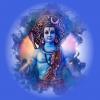 Submitted by Bhagwan Shiva on
Submitted by Bhagwan Shiva on

Image by rollfimages from http://123rf.com
The human body and mind are a microcosm of the universe. Just as different aspects of nature (sunrise, sunset, birth, death) need to be in balance, the human body and mind need to stay aligned to their natural rhythms to operate optimally. Our body works on the principle of homeostasis. Different bodily functions have to be in equilibrium for an optimal functioning of the whole. This requires appropriate levels of body temperature, body fluids, mineral and salts, blood sugar and so forth. If any of these go out of balance, we become ill.
Likewise, a key condition for an optimal experience of life’s journey is a healthy balance in different aspects of our being. This also means creating balance in our various life goals and pursuits. According to ancient Vedic scriptures, human beings have four aims in life. What makes a good life is living these aims in a healthy balance. That allows us to experience the sweet spot of life.
Artha
Artha is the essential building block of life. It represents the pursuit of earning a livelihood and gaining financial security. It is symbolic of our worldly life. In the absence of Artha, it can be more challenging to fulfil the other three goals. All the same, Artha discourages against single-mindedly hankering after materialistic life. It promotes engaging in meaningful work and learning to be content.
Kama
Kama is the pursuit of fulfilling our desires. It refers to both sensual pleasures as well as the creative and aesthetic experience of life including beauty, love and wonder. A healthy level of Kama is necessary for life. In fact, it’s essential for the pursuit of Dharma and Moksha (the desire to do the right thing and follow the path of spiritual self-realization).
Kama is an important aim as long as it does not conflict with the quest of the other three goals. However, an excessive pursuit of Kama, through money, power and pleasure, can lead to greed, addictions and undue sensual attachments.
Dharma
Dharma is about being righteous, about doing the right thing. This entails discovering and consciously pursuing our life’s deeper purpose – the unique and special reason we were born on this earth for. The purpose that expresses our nature and serves society in some way. One that furthers our evolution as a human being.
Doing the right thing requires us to play all our outer roles (as a professional, parent, child, neighbour, citizen) with a great sense of duty and commitment. This includes doing right by others and the world, including the environment. Dharma further asks that all along, amidst all our actions, we remain mindful of our inner and deeper purpose. Such alignment makes life more effortless and less stressful.
Moksha
Moksha stands for nirvana, the true spiritual liberation. It represents complete self-realization of our true nature – one of eternal awareness. We then not just intellectually know, but fully experience ourselves and everyone and everything around us as that same awareness. Moksha is the freedom from the ignorance of our egoistic self. Engaging with spiritual teachings and cultivating a healthy level of detachment, from outcomes of our actions, makes a good start towards this goal.
The Sweet Spot
While all the four are key aims of life, there is an inherent hierarchy among them. Artha being the most basic and Moksha the most evolved. The sweet spot of life exists in finding the right balance between these aims at different stages of life. When we are younger, perhaps we can have a greater emphasis on Artha and Kama and as we grow older it can shift towards Dharma and Moksha. Having said that, these aims are not intended to be lived sequentially. While our prioritization among the four aims can shift, we must be conscious of all four at all stages.
If we feel our life is out of sync or we are experiencing any inner conflicts, it might be an indication that our pursuit of these goals is imbalanced. Pursuing primarily material goals with little regard to living our life purpose creates lack of fulfilment. Enjoying ourselves too much and not attending to our spiritual growth leads to inner emptiness. Following our life purpose but struggling to make a living generates anguish. Committing to a spiritual path but becoming obsessed about it creates undesirable attachment. Always serving others but not being compassionate towards ourselves dries up our reservoir of kindness. We need to find the optimal balance among all of this. That’s what facilitates experiencing the sweet spot of life.
Rajiv Vij
https://rajivvij.com/2021/03/the-sweet-spot-of-life.html
- 807 reads